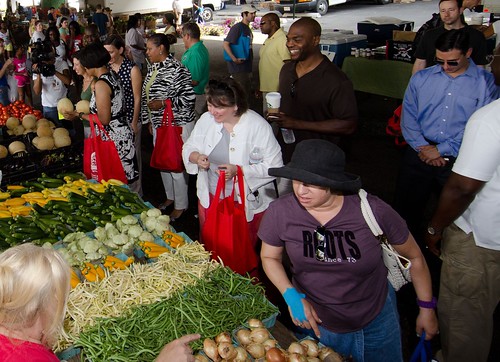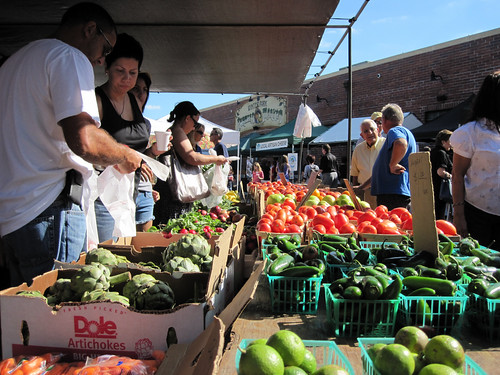
We’ve known for some time that local food is a vibrant and growing sector in agriculture. Consumers are seeking out food produced in their region, and this local food – whether it’s purchased at a farmers market, in a grocery store, at a restaurant or elsewhere – is now a multi-billion dollar industry. This week, we received further evidence of the strength of consumer demand for local foods. The National Farmers Market Directory, compiled by USDA’s Agricultural Marketing Service (AMS), has just been updated and shows a nearly 10 percent increase in listings over last year.
There are now 7,864 farmers markets listed in the directory – 7,864 opportunities for producers to capture more of the food dollar and for consumers to connect with the men and women who produce their food.
Our directory listings saw double-digit increases in the Southeast, Northeast, and mid-Atlantic regions of the country. That means we’re connecting 689 more markets with new customers, and bringing more farm-fresh foods to your fingertips—just in time for National Farmers Market Week.

Throughout the week, we are celebrating the vital role that farmers markets play—by connecting us to our communities and our food—and the business opportunity they represent to producers across the nation. About 25 percent of U.S. farmers sell exclusively through farmers markets. Their commitment and ties to the communities they serve are linked directly to the success of their businesses.
USDA is committed to supporting these direct marketing opportunities; it is one part of our strong, diverse agricultural industry. We provide support to farms, businesses and markets across the country through programs like our Farmers Market Promotion Program (FMPP) and Specialty Crop Block Grant Program (SCBGP). In addition, our Federal State Marketing Improvement Program (FSMIP) offers matching funds to states to support new opportunities in their local agricultural communities. Information on these programs and more is available through the Know Your Farmer, Know Your Food Compass, a newly-updated guide and map to USDA support for local food systems.
Whether you’re at home during National Farmers Market Week, or traveling elsewhere in the country, our directory will help you find a farmers market to visit. If you’re in Washington, D.C., please join us at the USDA farmers market this Friday.

